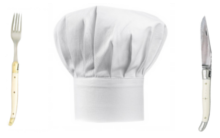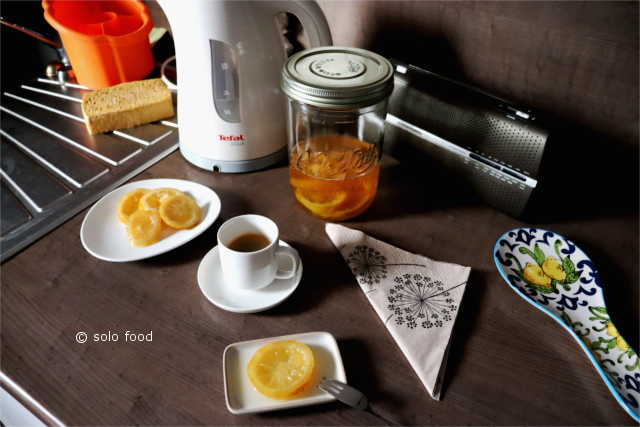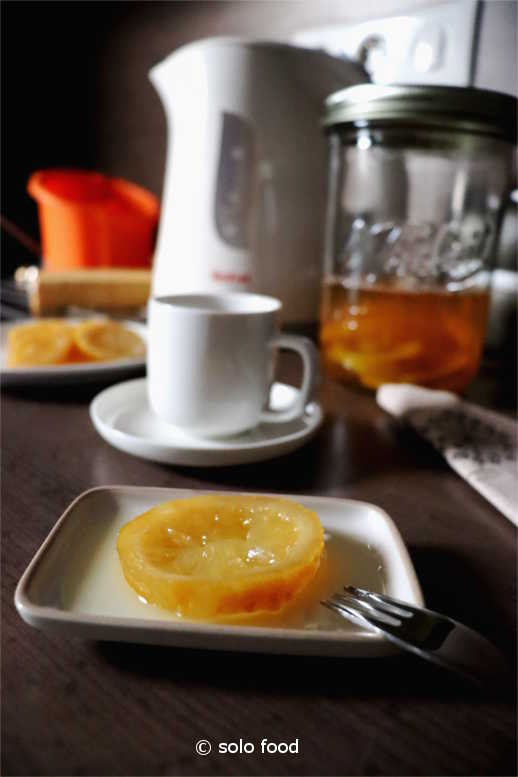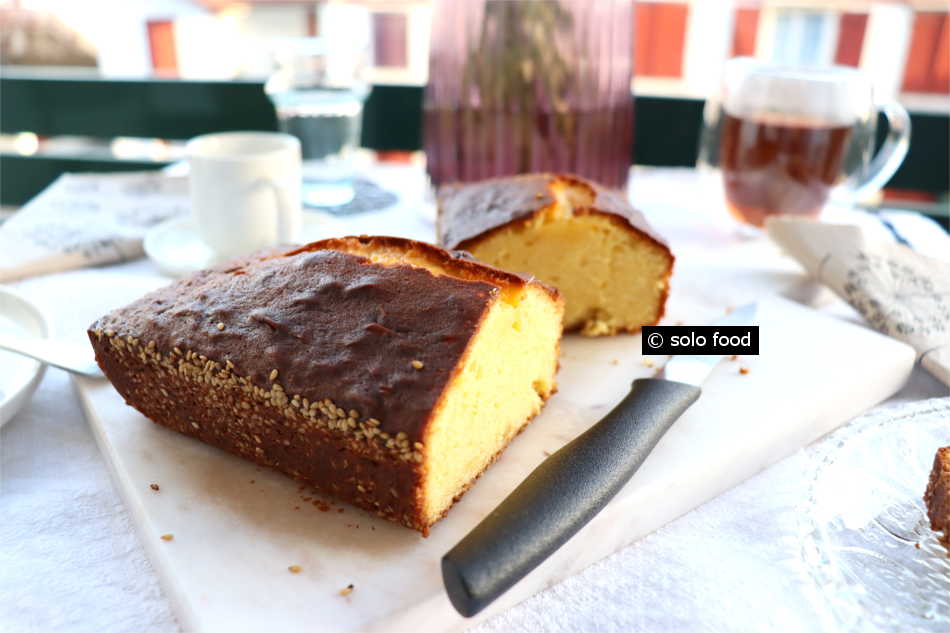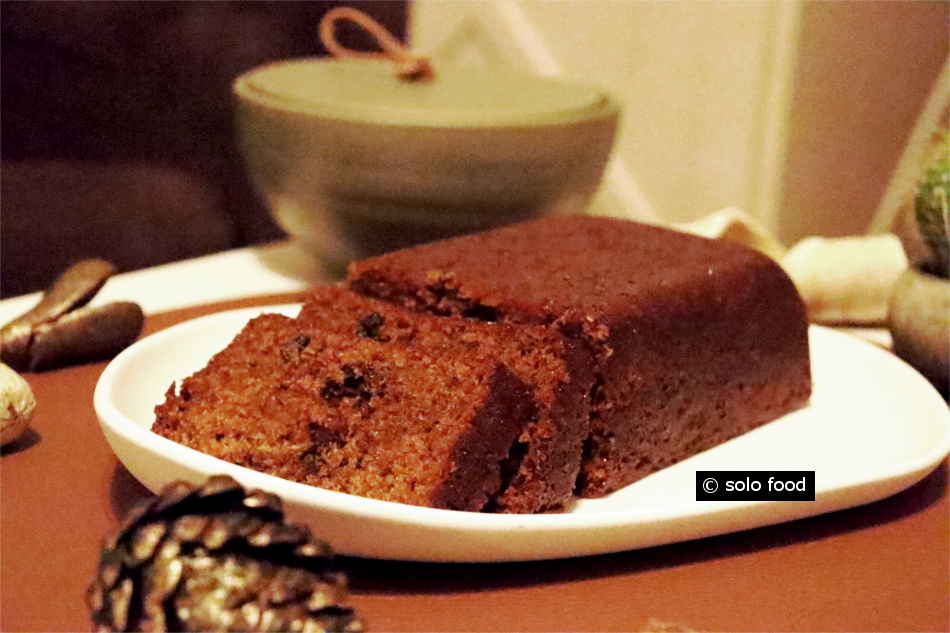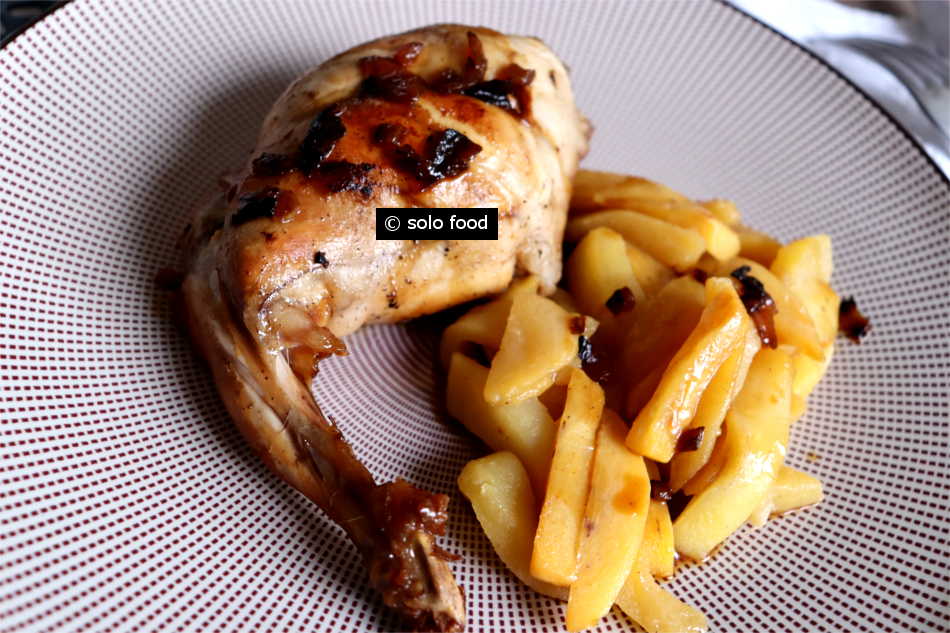This recipe for a sweet lemon confit comes from the great French Chef called Alain Ducasse. The sweet lemon confit in France is used in desserts but it’s rarely served as a stand-alone dessert. Except that in Greece exists a whole family of caddied fruits (fruits confit) that are served with their syrup and are really-really good when the recipe is a successful one. For more details just read “The Story” towards the end of the page and use this recipe either to create ingredients for other recipes or as a stand-alone dessert, which I strongly suggest at least for a try, with a strong coffee to end well your lunch or to give yourself a boost in the morning or around 4pm :-)
In two words:“Without style, playing and winning are not enough”.
Réné Lacoste
difficulty – easy
preparation-10'
cooking - 20’ + 20’
serves - as many parts as the lemon rounds when is eaten alone or ~ 330gr as an ingredient for other recipes
Steps
- Wash and dry the lemons
- Slice them in rounds of 0,5cm width and remove gently the seeds
- Heat-up some water in a pan
- Add the lemon rounds and let them boil for 2’-3’
- Remove the water and put them in a cooking balance to know their weight
- Weigh the same weight of caster sugar
- Add the lemon rounds into the pan with haft the sugar quantity
- Cover with cold water enough to cover the fruits and the sugar
- Let them cook in low heat for 20’ with the lid on until they become a bit “confit”
- Let the mix cool down
- Add the rest of the sugar
- Let them cook again from 20’ with the lid on
- Let the mix cool down
- Enjoy them either one slice at a time with some syrup and a coffee or as an ingredient for other recipes such as:
What’s the story behind this recipe?
This is a recipe coming of the Great Alain Ducasse as it is presented in theAcadémie du Goût. Nevertheless, the funny thing is that in Greece we do a series of fruits confits in the syrup that we call “the desserts of the teaspoon” or glyka tou koutaliou or γλυκά του κουταλιού There are several kinds for instance the most classic with sour cherry and the area of Pelion (which is the country of Centaurs) has a great tradition and reputation in their confectioning. There is a version with chestnuts (**) confit but in their syrup, that is very good, or with carrots, or with melon or with watermelon or with orange or even with quince. (**) confits mais dans le sirop, qui est très bonne, ou à la carotte ou au melon ou à la pastèque ou à l’orange ou encore au coing.
Traditionally they are kept in jars made out of glass.
This dessert, in the Past, was found in every home and it was served to guests during the afternoon and was served in small plates made out of glass also with a teaspoon and some syrup. It was not destined for Great Occasion unless it was demanded by guests.
It was the dessert of everyday life, and was made often by the mistress of the house in order to bring some sweetness and comfort to life with something that was of great quality and without fat or to share moments of conviviality with others in the everyday life :)
Today some kinds of this dessert are served without syrup on top of Greek yogurt or in our case in France, at least in my case, with some fromage blanc made with sheep milk.
I will try to do other recipes as well for desserts in this family because it’s a dessert that is really good when the recipe is right and healthy because there is not much sugar and has no fat!
Note that this sweet lemon confit has nothing to do with the standard lemon in brine, which is a well-known ingredient of countries around Mediterranean Sea, and it’s often used to savory dishes, except if the recipe asks explicitly for it.
(*) If you want to make the lemon cake, you can use the zest of the lemons to the cake, it’s also very good without the zest ;-)
(**) In France they had châtaignes and marrons both in Greek as in English are translated as chestnuts and I think we do not make the difference as the French do, unless if we produce either châtaignes or marrons and we use one word for it, at least that my knowledge for the moment.
o-o C'est si bon ! o-o
- Categories: Greek Food, Vegan Food, Vegetarian Food, Special Food, Desserts, For Beginners, Recipes, Sweets
- Ingredients: lemon, caster sugar
